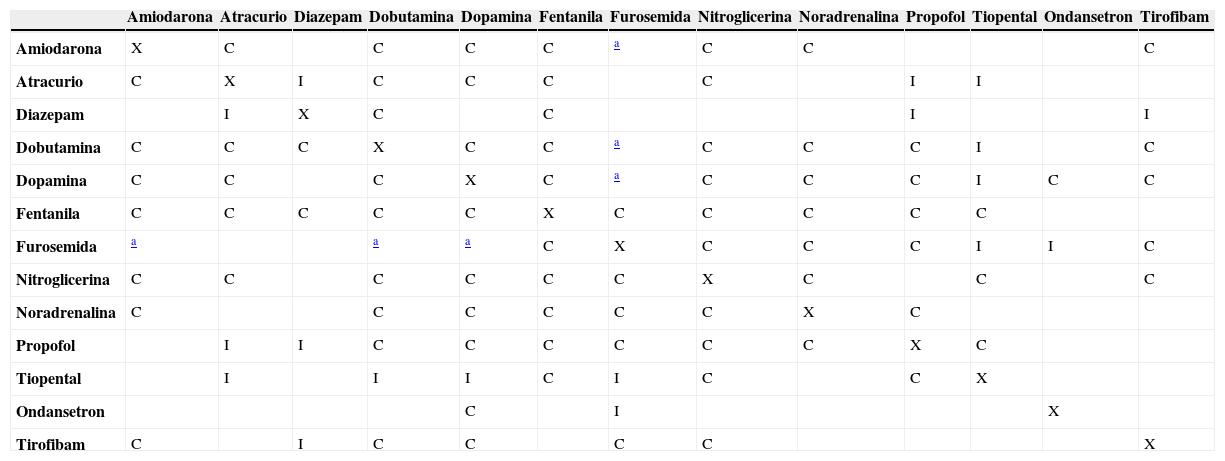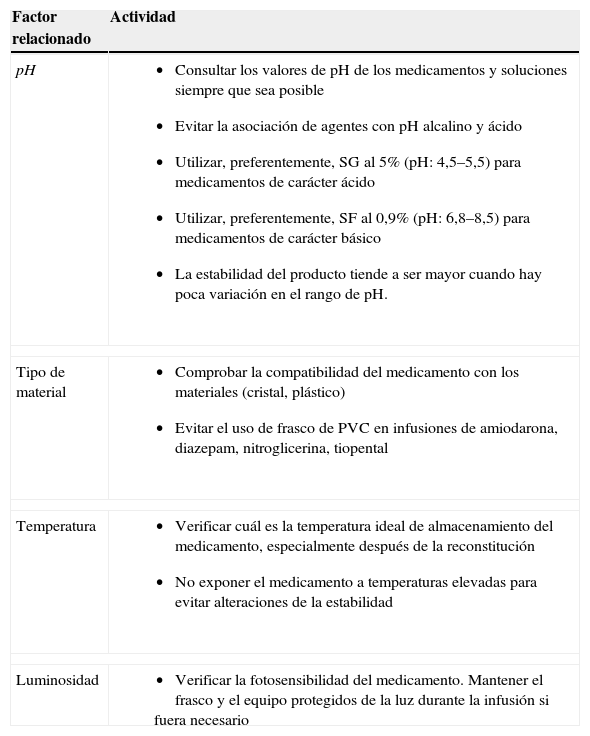La administración de medicamentos por vía intravenosa es frecuente en el ámbito hospitalario e indispensable si se precisa inicio rápido del efecto farmacológico o no se pueda utilizar otra vía de administración. La elección de la vía intravenosa conlleva unos riesgos asociados, como la aparición de incompatibilidades entre los fármacos administrados. La incompatibilidad es la reacción físico-química no deseada que se produce cuando dos o más medicamentos son mezclados y el producto resultante puede afectar a la eficacia y a la seguridad de la terapia. Estas incompatibilidades se consideran un error de medicación, y conocer sus fundamentos puede ayudar a prevenir su aparición disminuyendo así los riesgos. El presente artículo describe el tipo de incompatibilidades, da ejemplos para algunos fármacos frecuentemente utilizados en la terapia intravenosa cuando se administran en sistema en “Y” y explica los factores relacionados en la producción. Se revisa la información sobre la base teórica que facilita la comprensión de los mecanismos que intervienen en su producción. También se proponen actividades que puede desarrollar enfermería para prevenirlas y que debería incorporar en la planificación del tratamiento farmacológico. La rápida incorporación de nuevos fármacos en el régimen terapéutico de los pacientes obliga al profesional de enfermería a revisar y a actualizar el conocimiento de las incompatibilidades entre los fármacos que maneja. La fácil accesibilidad a fuentes de información fiables por parte de enfermería es una estrategia fundamental que permite la puesta al día y la prevención de los riesgos asociados.
In hospitals, the administration of drugs intravenous is very common and essential in cases where there is a need for rapid onset of pharmacological effect or another administration route cannot be used. The intravenous route may entail risks, such as the incompatibility between the drugs administered. Incompatibility is any unwanted physicochemical reaction that occurs when two or more drugs are mixed and where the resulting product can affect the efficacy and safety of therapy. This phenomenon is considered a medication error and a basic knowledge of this can help prevent its onset, thus reducing the risks. This article describes the types of incompatibilities, gives examples of some drugs commonly used in intravenous therapy in the management of type “Y” and examine the factors related to the occurrence of this event. We review the information on the theoretical basis that aids understanding of the mechanisms involved in their production. This article describes interventions that nursing staff can take to prevent the incompatibility, and should be incorporated in planning the pharmacological treatment of patient in nursing care. The rapid incorporation of new drugs in the therapeutic regime requires nursing professionals to constantly review and update their knowledge on the incompatibility between the drugs that are under their care. Thus, access to sources of reliable information by the nurse, is a key strategy, which will keep them updated and can prevent the risks associated with the occurrence of this unwanted event.








